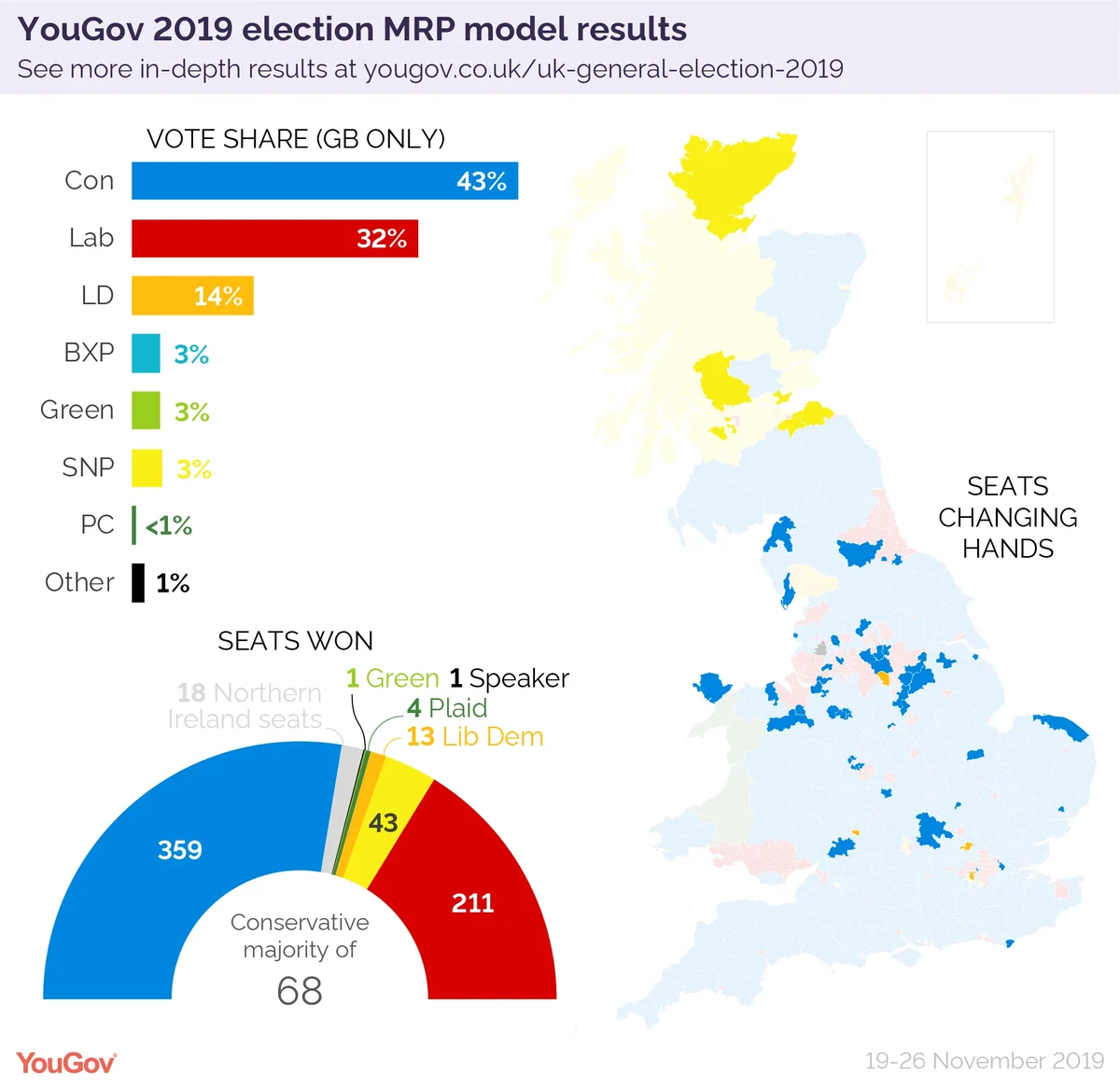Tories set for majority by taking Labour seats in Brexit heartlands
Traditional voting intention polls try to measure the share of the vote across Britain as a whole, rather than project the actual seats that would be won in an election. While the national swing can give a crude guide as to how votes may translate into seats, the reality is more complicated than that.
Different seats behave in different ways. Parties may do better or worse in different parts of the country, or in areas that are more pro or anti Brexit, or where different parties are in contention. To use the old cliche, a general election is not one contest – it is 650 individual races.
MRP is a polling technique aimed at solving that problem, a way of using big samples sizes to project figures onto smaller geographical areas. It works by using an extremely large number of interviews to model people's voting preferences based upon their demographics (age, gender, education, past vote and similar factors) and the local political circumstances (such as whether they live in a Conservative or Labour seat? Is a pro-Brexit area? Is there an incumbent MP?).
Once this model has been developed it is applied to the demographic make-up and political circumstances of each of the 632 constituencies in Great Britain, providing projected vote shares for each and every seat (it does not cover Northern Ireland). YouGov used the same method in the 2017 General Election when our model accurately showed a hung Parliament when many other election predictions were pointing towards a Conservative majority.
The release of our first MRP model projection for the 2019 election suggests that this time round the Conservatives are set for a majority. If the election were held today we project that the Tories would win 359 seats (a gain of 42 from 2017), Labour would win 211 (down by 51), the SNP 43 (up eight) and the Liberal Democrats 13 (a gain of one). Plaid Cymru would retain their four seats, the Greens would keep their single seat, and the Brexit Party would not take any seats at all.
As it stands, the swing to the Conservative party is bigger in areas that voted to Leave in 2016, with the bulk of the projected Tory gains coming in the North and the urban West Midlands, as well as former mining seats in the East Midlands.
At this point in the campaign, the Liberal Democrats have not made any real breakthrough – with our current projections showing that while they would pick up four seats they would lose three elsewhere.
In Scotland, the SNP look set to make gains, taking five seats from Labour, two from the Conservatives and one from the Liberal Democrats.
The projection is based on a total of 100,319 interviews, conducted over the past week, the last of which took place in the afternoon on 26th November. As with all models, there is uncertainty. Taking into account the margins of error, our model puts the number of Conservative seats at between 328 and 385, meaning that while we can be confident that the Conservatives would currently get a majority, it could range from a modest one to a landslide.
More importantly, there is still a fortnight to go until polling day. While we can measure people's current support and work out what the estimated seat totals would be today, we cannot tell how people's minds may change over the next two weeks.
We explore some more of the key findings in the MRP model here, and you can explore the data yourself here. Find out more details about how MRP itself works here.










